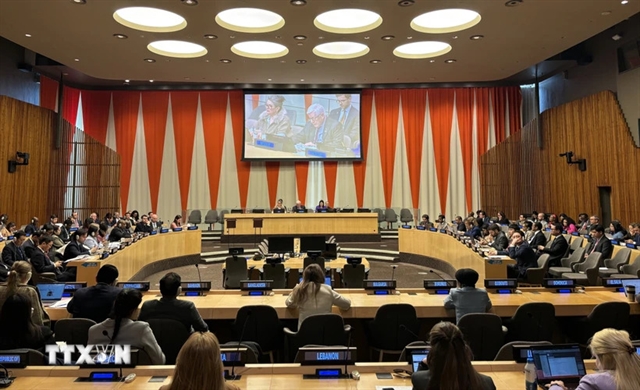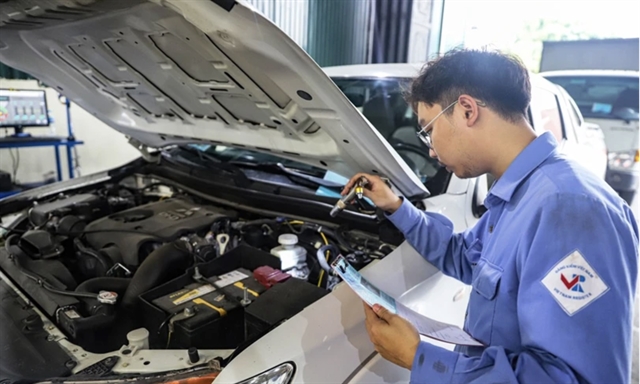 Society
Society

The lacklustre agricultural mechanisation was attributed to the unsatisfactorily slow progress in land aggregation, leading to the persistence of small-scale and scattered production, said Ngô Đại Ngọc, deputy director of the Department of Agriculture and Rural Development.
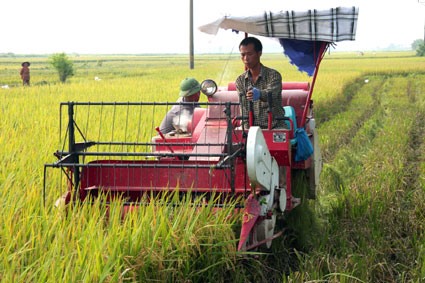 |
| A farmer operating a rice harvester machine, resulting in better efficiency, in Hoà Bình Commune, Thường Tín District, Hà Nội. — Photo hanoimoi.com.vn |
HÀ NỘI – The lacklustre agricultural mechanisation was attributed to the unsatisfactorily slow progress in land aggregation, leading to the persistence of small-scale and scattered production, said Ngô Đại Ngọc, deputy director of the Department of Agriculture and Rural Development.
The statement was made during the conference titled “Review Development of agricultural mechanisation Project in Hà Nội in 2016 with a vision toward 2020” held yesterday in Hà Nội City.
Back in 2013, the city’s authorities approved the project, which has brought limited albeit welcome transformation in agriculture, partly doing away with farmers’ traditionally scattered production, reducing production costs and increasing productivity. There is still, however, more room for improvement.
According to the set target, in 2016, the city will raise mechanisation rate in cultivation to 20 per cent. However, there are now only 272 cultivator machines in the city area and the mechanisation rate currently stands at 2.55 per cent -- merely 12.7 per cent of the set target.
Specifically, in cultivation, technology adoption remains low and farmers lack the skills to operate the machines. Small holdings also make it difficult to use high power machines or to cooperate in production and selling.
Local officials lack in capacity and training in machinery operations. Related services such as repairing or maintenance of agromachines haven’t been paid due attention.
Vũ Đình Hải, vice chairman of the Hương Ngải Commune People’s Committee, Thạch Thất District, lauded the positive effects of mechanisation.
Farmers benefit from a cutback of 28 per cent in services costs, saving VNĐ180,000 per acre compared with traditional services. Mechanisation and technology adoption in every phase from land preparing, planting to harvesting also help to reduce costs and improve efficiency.
According to Hà Nội’s Agriculture Promotion Association, on average, a single cultivator machine can accomplish the manual labour of 30 farmers. In addition, using cultivator, the distance between seedlings remain even and suitable, which promotes rice plants’ growth, resulting in 10-15 per cent higher yield with production costs being cut back about VNĐ 1.2-1.5 million (US$53-66) per acre.
According to Ngọc, during the year, progress in mechanisation slowed down to a halt. In the near future, besides mechanisation in planting, the authorities need to also focus on large-scale concentrated animal farming, value chain production and developing support services for machineries.
He also added that acceleration of land aggregation must be sped up -- when relations of production change, mechanisation in agriculture will naturally follow. – VNS

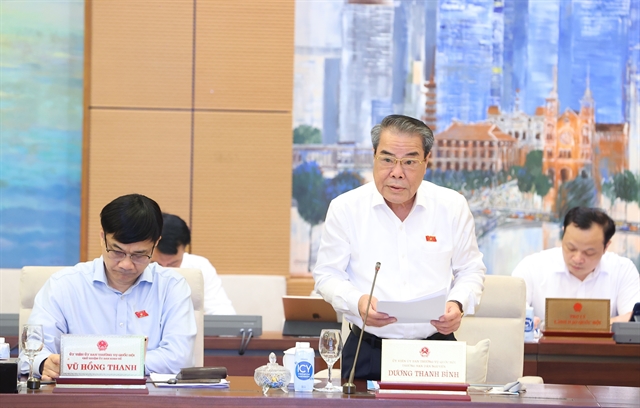
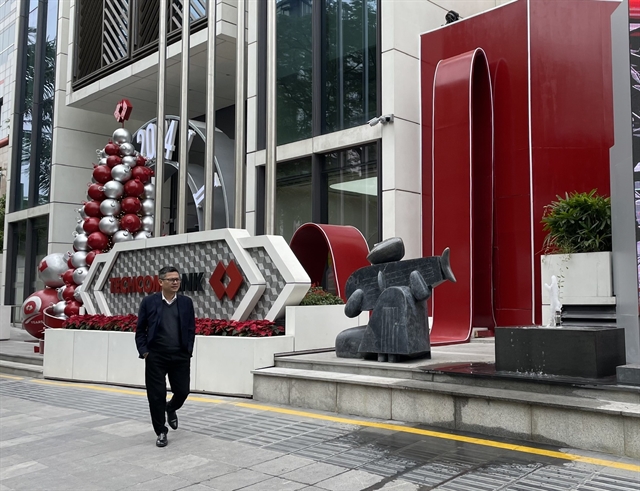




.jpg)

